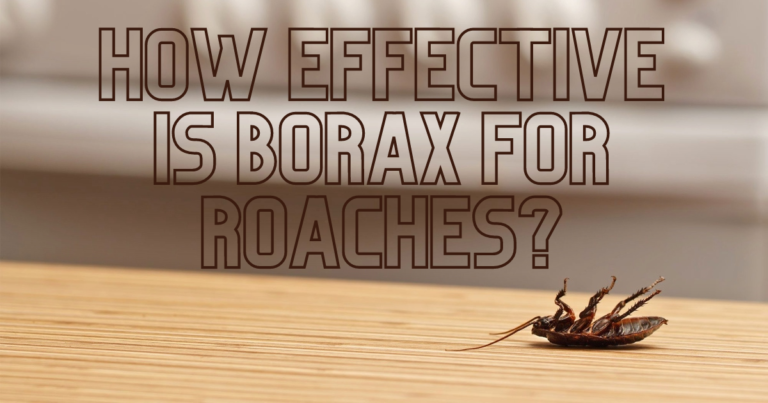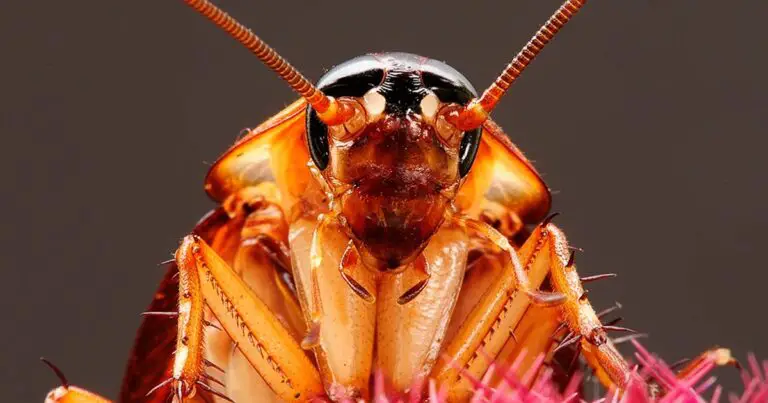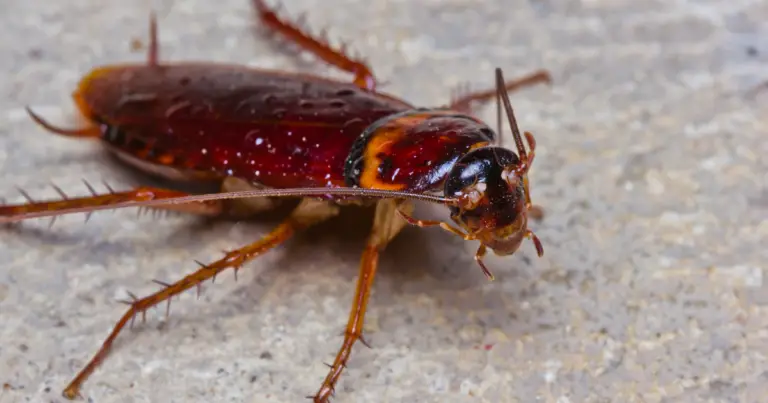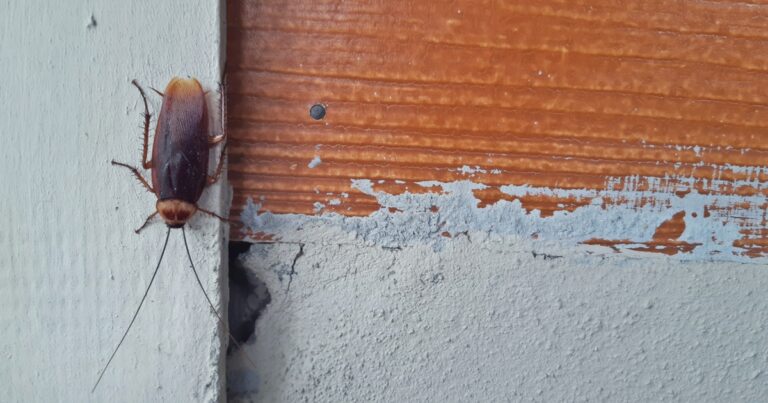Do Cockroaches Shed Their Skin? (You’ll Be Surprised)
Have you ever wondered, “do cockroaches shed their skin?” Well, get ready to dive into the intriguing world of these resilient creatures as we explore the captivating process of cockroach skin shedding.
Cockroaches are fascinating creatures that have been around for millions of years. They have developed some incredible survival mechanisms, and one of the most remarkable is their ability to shed their old skin. But why do they do it? And how does it all happen?
In this article, we’ll take you behind the scenes of the cockroach molting process. We’ll walk you through the stages, from pre-molt to post-molt, and reveal all of the details of this natural phenomenon. You’ll discover the factors that influence the molting process and understand the important role it plays in the growth, repair, and adaptation of these resilient insects.
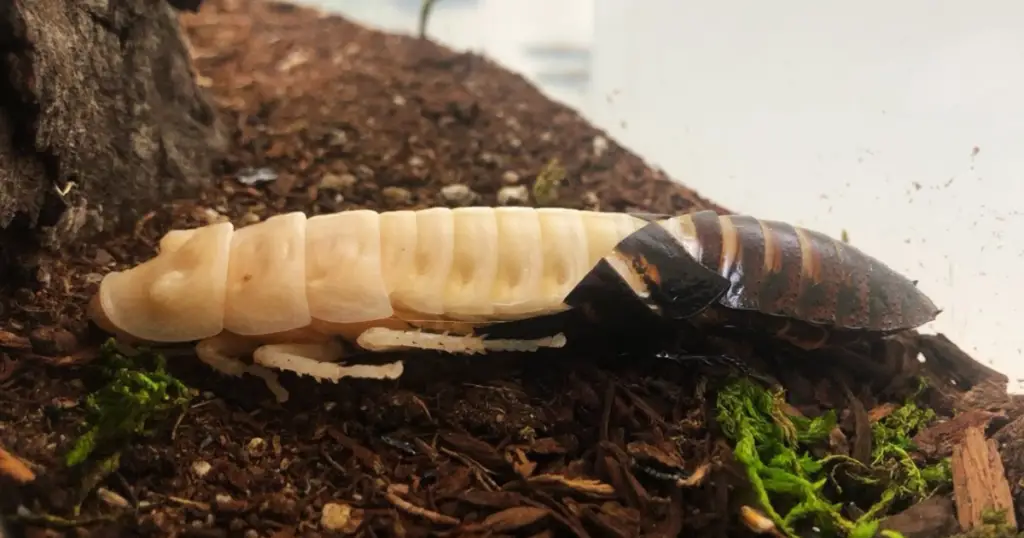
The Stages of Cockroach Molting: A Step-by-Step Guide
There are four stages of cockroach molting or “cockroaches shedding their skin.” They are:
- Pre-molt
- Ecdysis
- Post-molt
- Inter-molt
Stage 1: Pre-Molt
Before the actual shedding of their skin takes place, cockroaches go through a series of pre-molt preparations. During this stage, the cockroach’s body secretes a hormone called ecdysone, which signals the beginning of the molting process. This hormone triggers various changes within the cockroach’s body, including the production of a new, soft exoskeleton underneath the old one.
As the new exoskeleton forms, the cockroach absorbs minerals and nutrients from its current exoskeleton to strengthen the upcoming one. This process helps ensure that the new exoskeleton is sturdy and capable of protecting the growing cockroach during its next stage of development.
Stage 2: Ecdysis
Once the new exoskeleton has sufficiently developed and hardened, the cockroach is ready to shed its old skin. This stage is known as ecdysis or molting. The cockroach will typically find a safe and secluded spot to begin the shedding process, as it can be a vulnerable time for the insect.
To initiate the molt, the cockroach starts by loosening the old exoskeleton from its body. This is achieved through the secretion of enzymes that weaken the connections between the old exoskeleton and the underlying body tissue. As the old exoskeleton separates, the cockroach wriggles and pushes its body to free itself from the confining shell.
Stage 3: Post-Molt
Once the old exoskeleton is shed, the cockroach emerges with its fresh, soft exoskeleton exposed. At this point, the cockroach’s body is larger and more pliable than usual. It may appear pale and lighter in coloration due to the new exoskeleton being soft and not fully hardened.
After emerging from the old exoskeleton, the cockroach begins the process of expanding and hardening its new exoskeleton. It rapidly absorbs air and fluids into its body, causing it to expand and regain its normal shape and size. This expansion process allows the cockroach to grow into its new exoskeleton and provides it with the necessary protection and support.
Stage 4: Inter-Molt
The inter-molt stage follows the post-molt stage and refers to the period between two molts. Cockroaches remain in the inter-molt stage for the majority of their life, during which they grow, feed, and reproduce. The duration of the inter-molt stage varies depending on the cockroach species, environmental conditions, and individual factors. As the cockroach grows, it will eventually outgrow its current exoskeleton, triggering the molting process to repeat.
Do Cockroaches Shed Their Skin? The Importance of Molting
Molting is a crucial process in the life cycle of cockroaches. It enables these resilient insects to grow, renew their protective exoskeletons, and adapt to changing environmental conditions. Let’s explore the significance of molting for cockroaches in more detail.
- Growth: Molting allows cockroaches to increase in size and undergo metamorphosis. As cockroaches grow, their exoskeletons become too small and restrictive. Through molting, they shed their old exoskeleton and replace it with a larger and more spacious one. This process accommodates their growing bodies, facilitating their development from nymphs into adult cockroaches.
- Renewal: Cockroaches’ exoskeletons serve as their outer protective layer. Over time, the exoskeleton can become damaged or worn out due to environmental factors, physical stress, or injuries. Molting offers cockroaches an opportunity to shed their old exoskeleton and replace it with a fresh, intact one. This renewal process ensures that cockroaches maintain the strength and integrity of their exoskeleton, providing them with the necessary protection against predators, dehydration, and other potential threats.
- Adaptation: The molting process enables cockroaches to adapt to changes in their environment. As cockroaches grow, their needs and surroundings may shift. Molting allows them to adjust their body size, change their exoskeleton thickness, and modify their physiological characteristics to better suit their current conditions. This adaptability enhances their survival chances by allowing them to respond to variations in temperature, humidity, food availability, and other environmental factors.
It’s important to note that molting is an extremely vulnerable period for cockroaches. When they shed their old exoskeleton, they are temporarily soft and defenseless. This vulnerability makes them more susceptible to predators and other potential dangers. Additionally, molting requires a significant amount of energy and resources for cockroaches to complete successfully.
Factors Affecting Molting: Adaptability in the Face of Challenges
The molting process in cockroaches is a delicate and intricate phenomenon that can be influenced by various factors. These factors play a crucial role in determining the frequency and success of molting, highlighting the adaptability of cockroaches in the face of challenging circumstances. Let’s explore some of the key factors that can affect the molting process:
- Environmental Conditions: The environment in which cockroaches live greatly impacts their molting process. Temperature and humidity levels play a significant role. Cockroaches require a suitable balance of these factors for successful molting. Extreme temperatures or excessively dry or moist conditions can disrupt the molting process, making it difficult for cockroaches to shed their old exoskeletons and form new ones. They may delay or halt molting until conditions become more favorable.
- Nutrition: Adequate nutrition is vital for cockroaches to undergo successful molting. A nutritious diet provides the essential nutrients, minerals, and proteins required for the growth and development of the new exoskeleton. A lack of proper nutrition can lead to weakened exoskeletons and molting complications. Inadequate food sources or a diet deficient in essential nutrients can hinder the molting process, making cockroaches more vulnerable to injuries or even death during molting.
- Stress: Cockroaches are remarkably adaptable creatures and can tolerate various stressful situations. However, high levels of stress can have an impact on the molting process. Factors such as overcrowding, competition for resources, exposure to toxins or pesticides, and disturbances in their environment can induce stress in cockroaches. Prolonged or intense stress can disrupt molting, leading to irregular molting cycles, stunted growth, or molting failures.
- Seasonal Changes: Cockroaches, like many other insects, are influenced by seasonal changes. They exhibit seasonal variations in their molting patterns and reproductive behaviors. Changes in temperature, humidity, and resource availability during different seasons can affect the molting process. For example, during colder months, cockroaches may slow down their molting cycles due to reduced metabolic activity.
- Developmental Stage: The stage of development also plays a role in the molting process. Cockroach nymphs, the immature stages of cockroaches, undergo multiple molts as they grow and mature into adults. The frequency and duration of molting can vary depending on the developmental stage. Young nymphs molt more frequently than older nymphs or adults, as they need to accommodate rapid growth and development.
- Hormonal Factors: Hormonal regulation is essential for the initiation and progression of the molting process. Cockroaches produce specific hormones that control molting and regulate the growth of new exoskeletons. Any hormonal imbalances or disruptions can impact the molting process, leading to abnormalities or molting failures.
Cockroaches, resilient by nature, have developed remarkable strategies to survive adverse conditions. When faced with unfavorable environmental conditions, limited nutrition, or high levels of stress, cockroaches can exhibit phenotypic plasticity, which allows them to adapt their molting patterns. They may undergo longer molting intervals, delay molting until conditions improve, or adjust their growth rates to compensate for suboptimal circumstances. These adaptive mechanisms enable cockroaches to maximize their chances of survival even in challenging environments.
The Significance of Skin Shedding: Necessity for Survival and Growth
Skin shedding, or molting, is a vital process for cockroaches, serving essential purposes in their survival and growth. Through molting, cockroaches can accommodate their increasing size, repair damaged body parts, and adapt to changing environments. Understanding the significance of skin shedding sheds light on the remarkable adaptations and resilience of these insects.
One of the primary reasons why cockroach skin shedding is crucial is to accommodate their growing bodies. As cockroaches mature, their exoskeleton becomes rigid and restricts further growth. Molting allows them to shed the old exoskeleton and replace it with a larger and more flexible one. By shedding their skin, cockroaches can continue to grow and develop, ensuring they can reach their full size and reproductive potential.
Skin shedding also plays a crucial role in repairing and regenerating damaged body parts. Cockroaches may encounter injuries or lose body parts during their active lives. Molting provides an opportunity for these insects to regenerate and replace damaged or lost structures. Through the molting process, cockroaches can regenerate appendages, such as legs or antennae, and repair any wounds or injuries sustained during their daily activities.
Molting also enables cockroaches to adapt to changing environments. As they molt, cockroaches shed their old exoskeleton, along with any parasites, pathogens, or chemical toxins that might have accumulated on the outer surface. This allows them to cleanse their bodies and start fresh with a new protective exoskeleton. The new exoskeleton hardens and provides improved protection against environmental factors, including predators such as cats and dogs, extreme temperatures, and desiccation.
Overall, the process of skin shedding is vital for the overall health and development of cockroaches. It enables them to grow, repair, and adapt, ensuring their survival in a dynamic and challenging world. Without the ability to molt, cockroaches would be unable to accommodate their increasing size, repair damaged body parts, or effectively adapt to changing environmental conditions.
Understanding Molting for Effective Pest Control: Disrupting Cockroach Populations
Understanding the molting process of cockroaches can provide valuable insights that aid in developing effective pest control strategies. By targeting vulnerable molting stages, it becomes possible to disrupt the growth and reproduction of cockroach populations, ultimately leading to successful pest management.
One key aspect to consider is that molting stages represent periods of vulnerability for cockroaches. During molting, cockroaches are temporarily soft-bodied as they shed their old exoskeletons and wait for the new exoskeleton to harden. This delicate phase makes them more susceptible to external threats, including insecticides and physical barriers.
By utilizing this knowledge, integrated pest management techniques can be implemented to control cockroach infestations. Integrated pest management emphasizes a combination of preventive measures, non-chemical strategies, and targeted use of pesticides. By understanding the molting process, pest control professionals can strategically time their interventions, focusing on the vulnerable molting stages to maximize the impact.
For instance, applying insecticides specifically during the molting period can disrupt the molting process, prevent the successful development of new exoskeletons, and eventually lead to the demise of cockroach nymphs or adults. Similarly, physical control measures such as trapping or exclusion can be utilized during molting stages to target vulnerable individuals, effectively reducing the population size and limiting their ability to reproduce.
If you have pets, you may want to know, is pest control dangerous for pets?
In addition to targeted interventions during molting stages, integrated pest management also emphasizes preventive measures to address factors that contribute to cockroach infestations. By eliminating food sources, reducing access to water, and sealing entry points, it becomes harder for cockroaches to establish populations and go through successful molting cycles.
Conclusion
Now you know the answer to “do cockroaches shed their skin?” is yes. There is a lot that goes into the cockroach molting process though. There are benefits like the regrowth of limbs, increase in size, and the ability to adapt to new or changing environments.
However, there is also the con of being more susceptible to the elements and predators.
If you have cockroaches – whether or not they are molting – you should still seek professional help from an expert pest control company.



